Demo
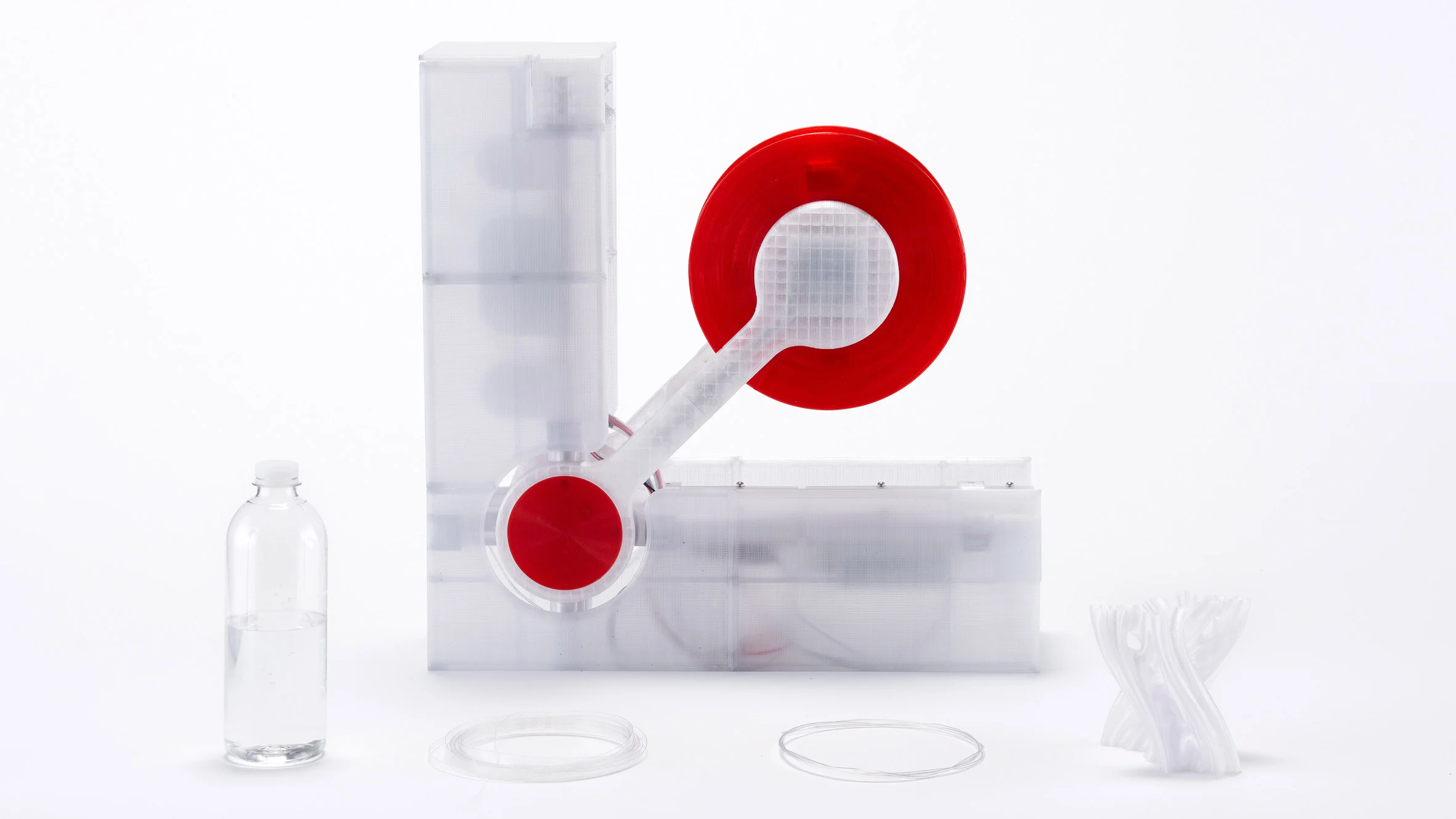
[Figure 1: Polyformer, view additional renders at https://www.reiten.design/polyformer]
[Figure 2: Project Video and Explanation, https://youtu.be/NZAx0Madaes]
[Figure 3: Polyformer-Lite Demo, https://www.youtube.com/shorts/qzZI_rOF4-U]
Project Kit
You can easily buy all of the required parts to build the machine at this link: https://dfh.fm/collections/new-products/products/polyformer-kit-by-reiten966.
Introduction
3D printing can fill in critical and underserved gaps of a country’s supply chain. One of our team member’s currently works at a community 3D printing center in Kigali, Rwanda. At this center, Rwandese students, entrepreneurs, and (most importantly) hackers use 3D printers to quickly and easily create items. The center’s 3D printers are able to produce a wide variety of products which are impractical to manufacture domestically and expensive to import from abroad. In low-resource settings, like Rwanda, 3D printing can drastically broaden and increase manufacturing capacity.

[Figure 3: E-Commerce Center (ECC) Rwanda, a makerspace and incubator in Kigali, Rwanda]

[Figure 4: 3D printers at ECC Rwanda]
Unfortunately, our 3D printer farm in Kigali faces a critical issue: filament. It is extremely expensive to purchase 3D printer filament in Rwanda. A standard roll of 1kg PLA filament retails for over $55 USD in local markets. For context, the same roll of filament can be purchased in the United States for just $20 USD. This price differential is exasperated by the lower purchasing parity of the average Rwandan. The high cost of filament, limits the accessibility of our 3D printing center and constrains the potential of 3D printing in the country.

[Figure 5: Retail price of filament at major vendor in Kigali]
Therefore, we are developing a low cost, easy to build, and easier to operate machine that manufactures 3D printer filament from discarded plastic water bottles. This machine will enable anyone to produce 3D printer filament at an extremely low cost, while also reducing their plastic footprint. Our goal is to deploy versions of the machine at our partner makerspaces in Rwanda. Moreover, since the project is 100% opensource, anyone around the world can easily buiild one of these filament recycling machines. For more information, check out the discord: https://discord.gg/d6eYykSs.
Prior Art
Since the beginning of desktop 3D printing, hackers have tried to find ways to make filament in house; especially from recycled plastics. From our understanding, the first such documented attempt of such a project was the FilaMaker by Marek Pantel; developed in 2013. A FilaMaker machine shreds waste plastics, such as failed 3D print jobs and water bottles, into small pieces.

[Figure 6: Plastic shredder for FilaMaker]
The grounded material can then be fed into a traditional extruder and purged into filament. Unfortunately, 3D printer filament made from shredded plastics tends to suffer from inconsistency issues. In our experience, shredded plastics tend to clog and jam extruders.
PullStrusion
Over the past year, a number of 3D printer tinkerers have demonstrated a new and more effectia ve method of producing filament: PullStrusion. In this method, a plastic bottle is cut into a thin long strip. This strip is then “pulled” through a 3D printer nozzle that is modified to have a 1.75mm hole. As the strip runs through the nozzle, it is curled from a flat to cylindrical shape.
We appreciate and strongly commend all hackers who have demoed and provided useful documentation for this process: JRT3D, Mr3DPrint, f2knpw, and Recreator3D. In particular, we would like to thank Josh N. Bee from Recreator3D who personally chatted with us individually and has created thorough documentation on recycling bottles into filament. We hope that this project pushes at-home filament extruders even further..
Innovations
We believe that by adding the following three innovations to our filament extruder, recycling plastic bottles into 3D printer filament will become significantly more viable.
- Automatic Filament Joiner: A standard 500ml plastic water bottle can only be recycled into ~5m of filament. Obviously, that is not long enough for most prints. Therefore, we are developing a companion machine that will automatically join different filament segments together into one long piece. The singular piece will then be automatically wrapped around a spool. A render of our latest design for this machine is shown below.This machine will make recycling filament drastically more practical.
![]() [Figure 7: Filament Joiner Mechanism]
[Figure 7: Filament Joiner Mechanism]
[Figure 7: Filament Joiner Mechanism Demo (non motorized)] - Adjustable Bearing Cutter: In order to turn a plastic bottle into 3D printer filament, the bottle must first be cut into a long continuous strip. The required width of the strip varies with the thickness of the bottle plastic. The PolyCutter can be dynamically adjusted to cut bottles to different strip widths. This makes it easier for users to recycle a greater variety of plastic bottles with the machine. [Figure: Plastic bottle cutter that can be adjusted to cut at different widths]
- Simplicity: Due to a lack of local resources, it is difficult to build a filament extruder in Rwanda. Therefore, we are trying to simplify as many aspects/components of our machine as possible to make it easiest for others to replicate the machine.
Goals
The following are the two main goals of the Polyformer Project:
- Lower the cost of 3D printer filament, especially in developing/remote communities.
- Reduce plastic waste and create local recycling opportunities.
Project Features
Fast Filament Extruder
The PolyFormer uses a standard pullstrustion method to convert PET bottles into 3D printer filament. Uniquiely, Polyformer uses a Volcano™ hot end to heat the plastic. Since Volcano™ hot ends have a longer meltzonem, Polyformer can create plastic filament at much quicker speeds that other PullStrusion machines.
[Figure: Polyformer Pulling Filament]
 [Figure: Polyformer Volcano Hot End]
[Figure: Polyformer Volcano Hot End]Protective Doors
The outer shell can be effortlessly opened thanks to the geared mechanism, it can be closed the same way to keep the user away from touching the hot end.
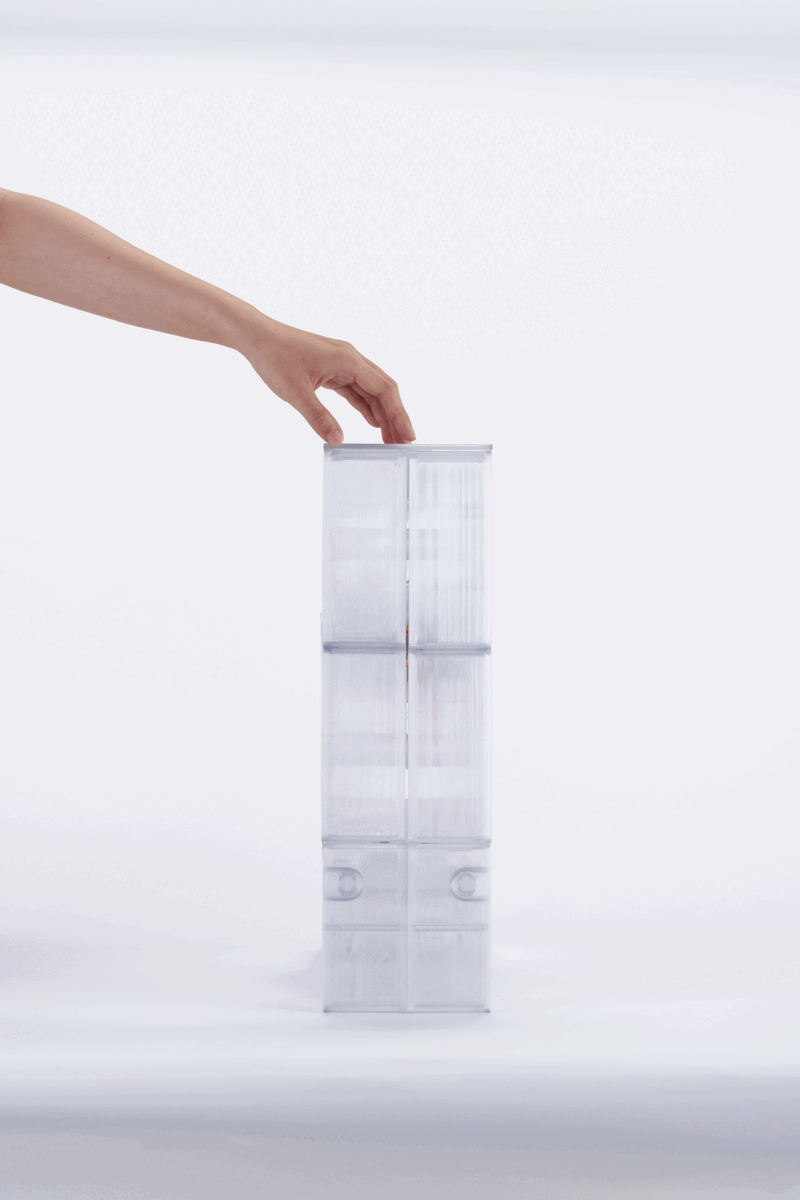
[Figure: Polyformer Door Opening]
L-Architecuture
The unique vertical L shape allows the users to easily interact with the machine and also minimizes the amount of space that the machine takes.
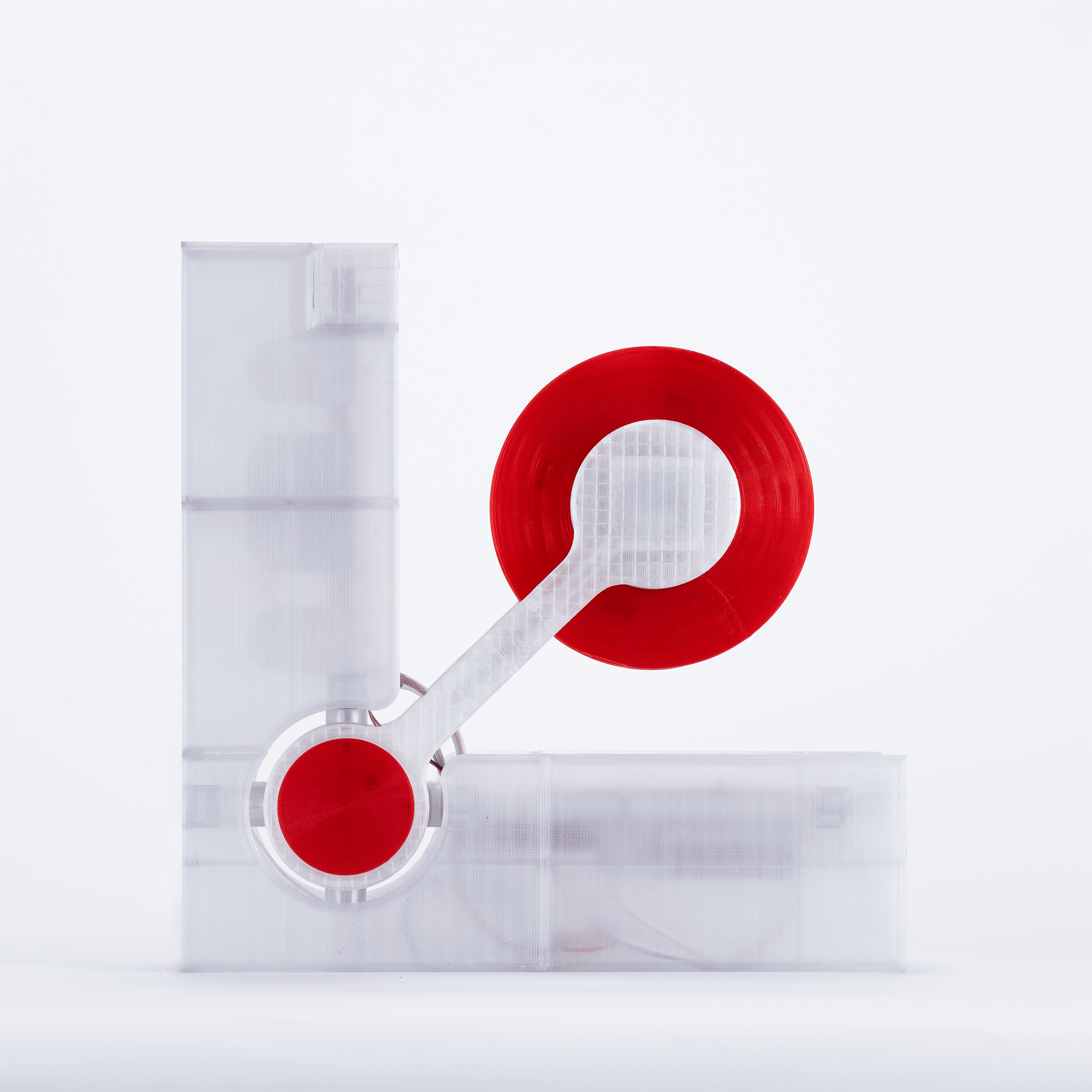
[Figure: L-Architecture of Machine]
Internal Gearbox
Alot of effort was made to ensure the machine has an elegant design. For example, the gearbox and motor is hidden by using an internal sinusoidal gearbox to drive the spooler mechanism.
Detachable Spool
The spool can be easily taken off to be transferred and used on a 3D printer.
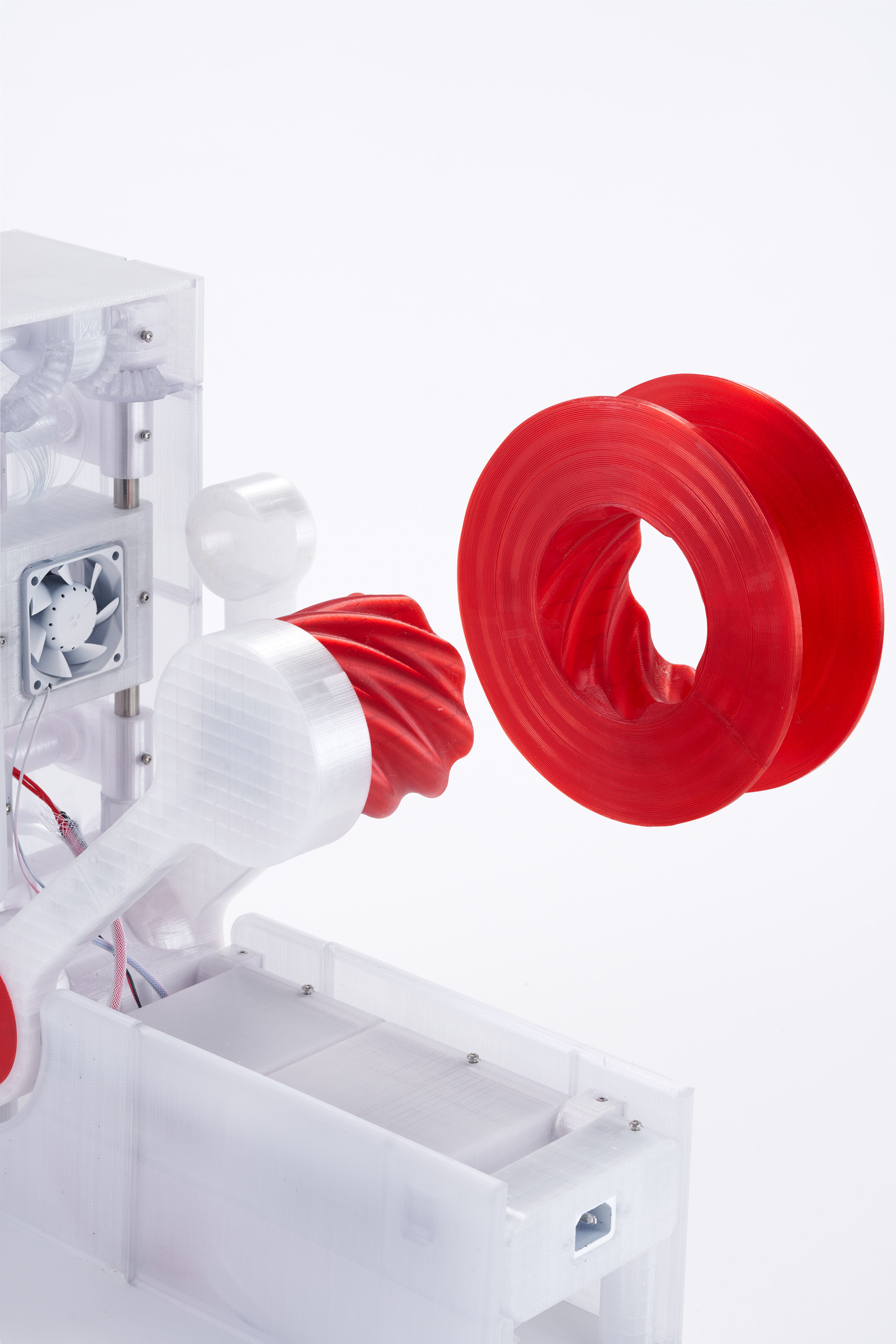
[Figure: Spool Being Removed from Machine]
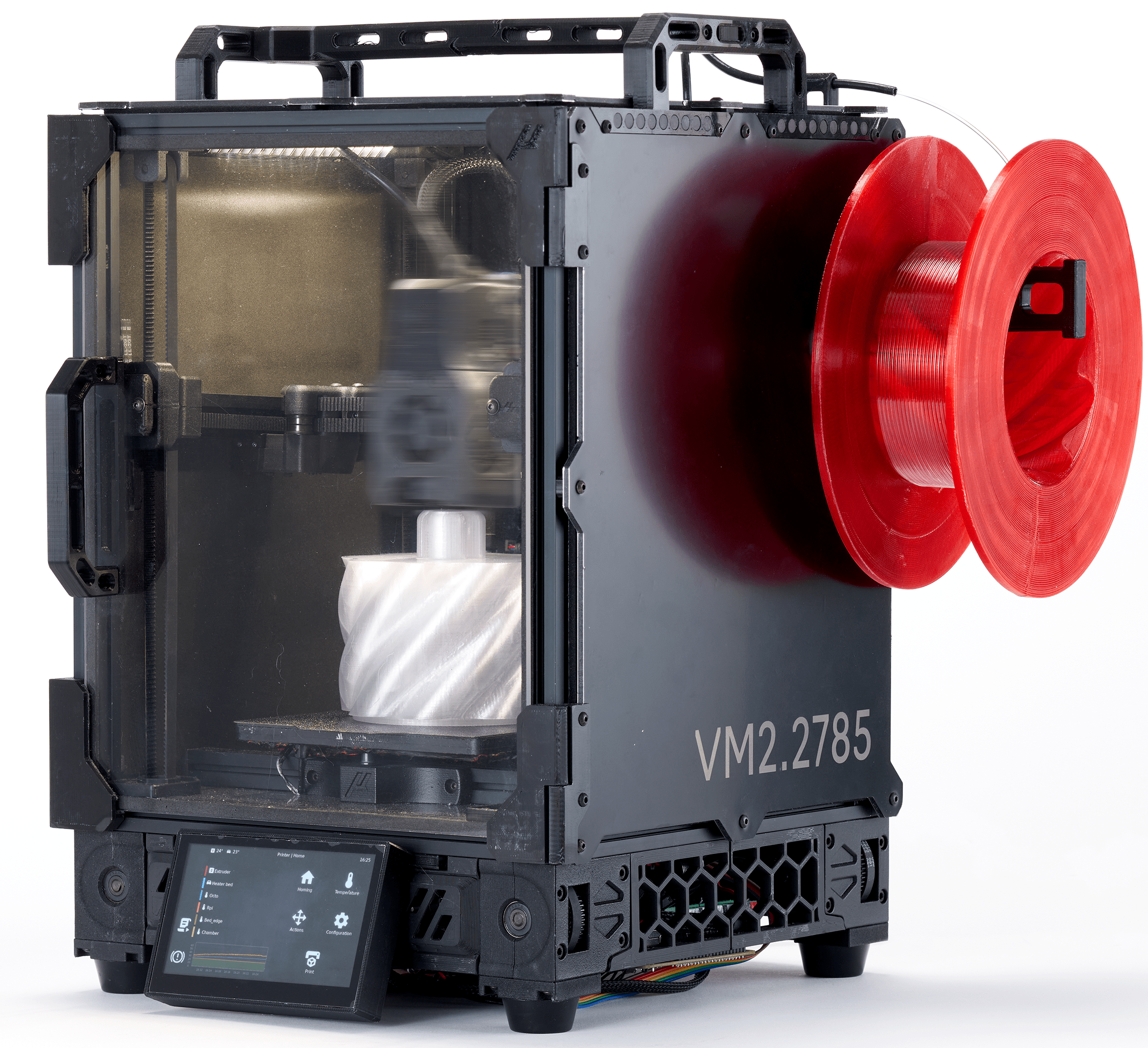
[Figure: Spool on 3D Printer]
Adjustable Bottle Cutter
Polyformer uses a custom bearing cutter mechanism to accurately and precisely cut a plastic bottle into a long strip. The height of the bearing can be adjusted so that strips of different widths can be cut.

[Figure: Adjustable Bottle Cutter Mechanism]
3D Printed / Open Source Parts
Polyformer is designed to be built with mostly 3D printed parts and easily obtainable components commonly found on 3D printers. Most makers can build it themselves. Moreover, the modular architecture allows users to easily swap out parts and modify the machine to their liking. With this in mind, it is not surprising that makers in 10+ countries have already replicated Polyformer. Check out our logs for photos of community builds!
PolyJoiner
An innovative aspect of our machine is the filament joiner. This mechanism can automatically enjoin different strands of print filament together into a singular piece. A standard ~500ml plastic water bottle can only produce ~5m of filament, which is not long enough for most print jobs. With our filament joiner, we are able to connect several small segments of filament together into one long piece. The enjoined filament is then autonomously wrapped around a spool. Our filament joiner makes using recycled filament significantly more practical. To our knowledge, we are the only group currently attempting to add a filament joiner mechanism to our extruder.
[Figure: Polyjoiner Demonstration]
Polyformer-Lite
Polyformer is an extremely elegant and robust machine, however it is also relatively expensive and time-consuming to build, This makes it difficult to consruct a Polyformer in low-resource settings, like Rwanda. Therefore, we have made a minimalist/small scale version of Polyformer known as Polyformer-Lite. While Polyformer-Lite is much small smaller than the original, it is also signicantly quicker, cheaper, and easier to build. This is demonstrated by the below charts on cost, build time, and print time. Credit goes to Ondřej Šraitr from the petamentor project for identifying how the W1209 board can be to control the thermistor.
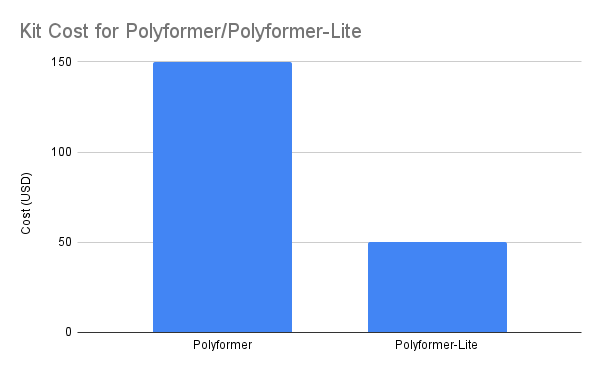
[Figure: Cost for Each Kit]
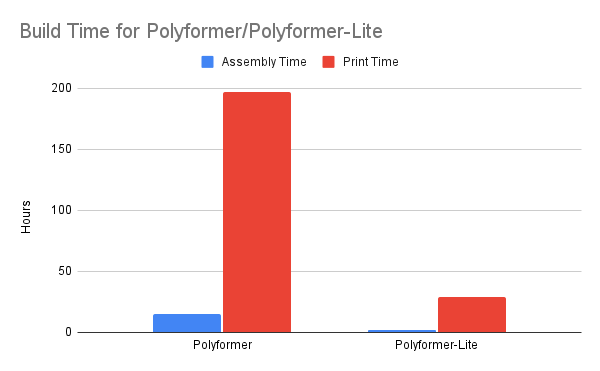
[Figure: Build hours per kit]

[Figure: Amount of material used]
Use Cases
This is Delphine - a business lady from Kigali. Delphine manufactures and sells handmade bamboo lampshades. While she loves her lamp shades, she wants her company to produce higher value added products that she can sell at a greater price. So ECC Rwanda worked with Delphine to design a bamboo lamp which she can build with ECC’s 3D printers and other local resources.
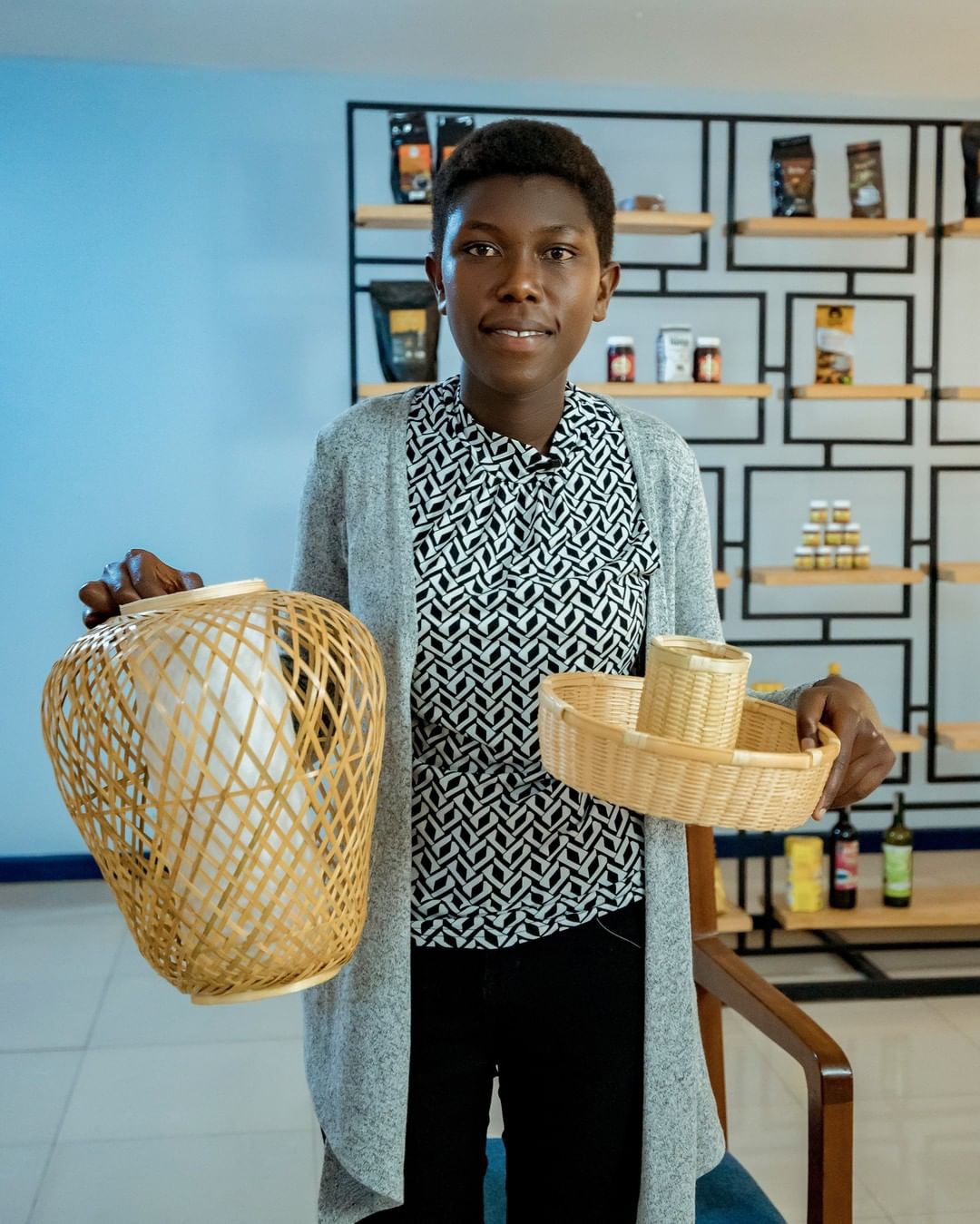
[Figure: Delphine Uwera with her bamboo products.]
 [Figure: 3D printed bamboo lamp]
[Figure: 3D printed bamboo lamp]
[Figure: ECC Rwanda Documentary]
Delphine is now able to sell her bamboo lamp for several times more than the lamp shade’s retail price (You can view it online here: https://rwandamart.rw/product/bamboo-abatjour-led-multi-color/). Delphine’s story is an example of how 3D printing can quickly and easily provide a community with manufacturing abilities. It would be financially impossible for Delphine to use traditional manufacturing methods, like injection molding, to manufacture her lamp. But 3D printing is quick and cheap enough for her to use. And by manufacturing filament domestically, we can make 3D printing even more accessible in the country.
Team Member Backgrounds
Reiten
Plastic waste management has always been a topic of concern for me. Oftentimes, recycling plastics is not economical to a degree that would incentivize many corporations to take such action. I started experimenting with the idea of decentralized recycling through a collective community effort, and thus the birth of Polyformer. The original idea was to turn common plastic waste into something useful. Whilst there have been some art and craft projects being done to upcycle plastics into common household goods, most of them don’t come close to the efficiency and versatility of what FDM 3D printers are capable of.
It came to my attention that some people have attempted to crush plastic wastes and remelt them into filament for use on 3D printers. The technique introduces some complicated processes and machinery and there is no easy way to simplify it at the current state of technology. For something to be easily accepted and adopted by many people, it has to be relatively easy to put together and use. Through deeper research, I discovered the "pultrusion" technique developed by Joshua Taylor. Taking inspiration from his project with my sets of criteria, I designed and built the Polyformer:
1. Using as many 3D-printed parts as possible reduces the need for sourcing components as many things aren’t available around the world.
2. The parts should be designed for ease of print, avoiding as many supports and post-processing as possible.
3. The machine should be designed to be compact so that it could fit in many workshops.
4. The machine should be easy to put together and not confusing to assemble.
5. The architecture should be easily configurable to allow expansions and modifications by the builders.
The end goal with Polyformer was never to simply make bottles into filaments. I would like to think Polyformer as a premature manifestation of decentralized manufacturing and recycling. But I think it has the potential to grow into something bigger as we continue developing it.
Imagine a future where products can be manufactured at home or at a community center and being distributed locally, being recycled into things at the end of their life that can be used again to manufacture new products right on site. The technology might not be there yet but I believe it’s not far from possible if we keep innovating, refining, and expanding Polyformer as a community to achieve that final goal.
There are a total of 800 people in the Polyformer discord since a month and a half ago when the project was first published open-source. Many people are building Polyformer as of right now. Hopefully, they will also form small communities around them, inspiring even more people to share different roles in the plastic recycling process: from collecting, sorting, cleaning, recycling and manufacturing. And through them practicing the process, new ideas will spark and be manifested into different projects that will come together in the end to streamline the decentralized manufacturing and recycling system.
Swaleh
I first became aware of recycling waste plastics into filament when my high school purchased a FilaMaker clone. My experience with the machine made me feel that making recycled 3D printer filament was not environmentally or economically efficient. This is still the case … in developed countries. However, when I moved to Rwanda, I was shocked to learn about the ridiculously high cost for 3D printer filament. While working at E-Commerce Center Rwanda, a community makerspace, my supervisor asked me to find a local way to fabricate filament. Thus, our printing lab would not be reliant on foreign donors to send filament from Europe. Initially, our makerspace bought two semi industrial Wellzoom extruders and attempted to run grounded plastic bottle shavings through the machine - this did not work. While a Wellzoom extruder could make filament from plastic pellets, the shavings were too irregular to move consistently through the machine. While struggling with the Wellzoom extruders, I learned about the PullStrusion process and tried to build a similar machine in Rwanda. I modified Recreator3D’s CAD to work with local 3D printer parts that we could find in the country. Eventually, our makerspace was able to produce 3D printer filament at less than 10% of the cost to import filament from abroad - as shown in our project documentation: https://docs.google.com/document/d/1ISXmjF_QsVcBWrX2nWv4g75Br9gLE4ejcfN5jevG9Js/edit?usp=sharing. Unfortunately, this machine could not produce filament at scale; especially in the Rwandan context. I decided to design a new extruder that would solve the existing problems and not only produce filament, but produce it in a practical way. While conducting research, I learned about Reiten’s Polyformer project (through Hackaday!) and asked him to collaborate on a new design. And this project has morphed into Polyformer-Lite.
Example Prints

[Figure 8: Filament signs with filament segments]
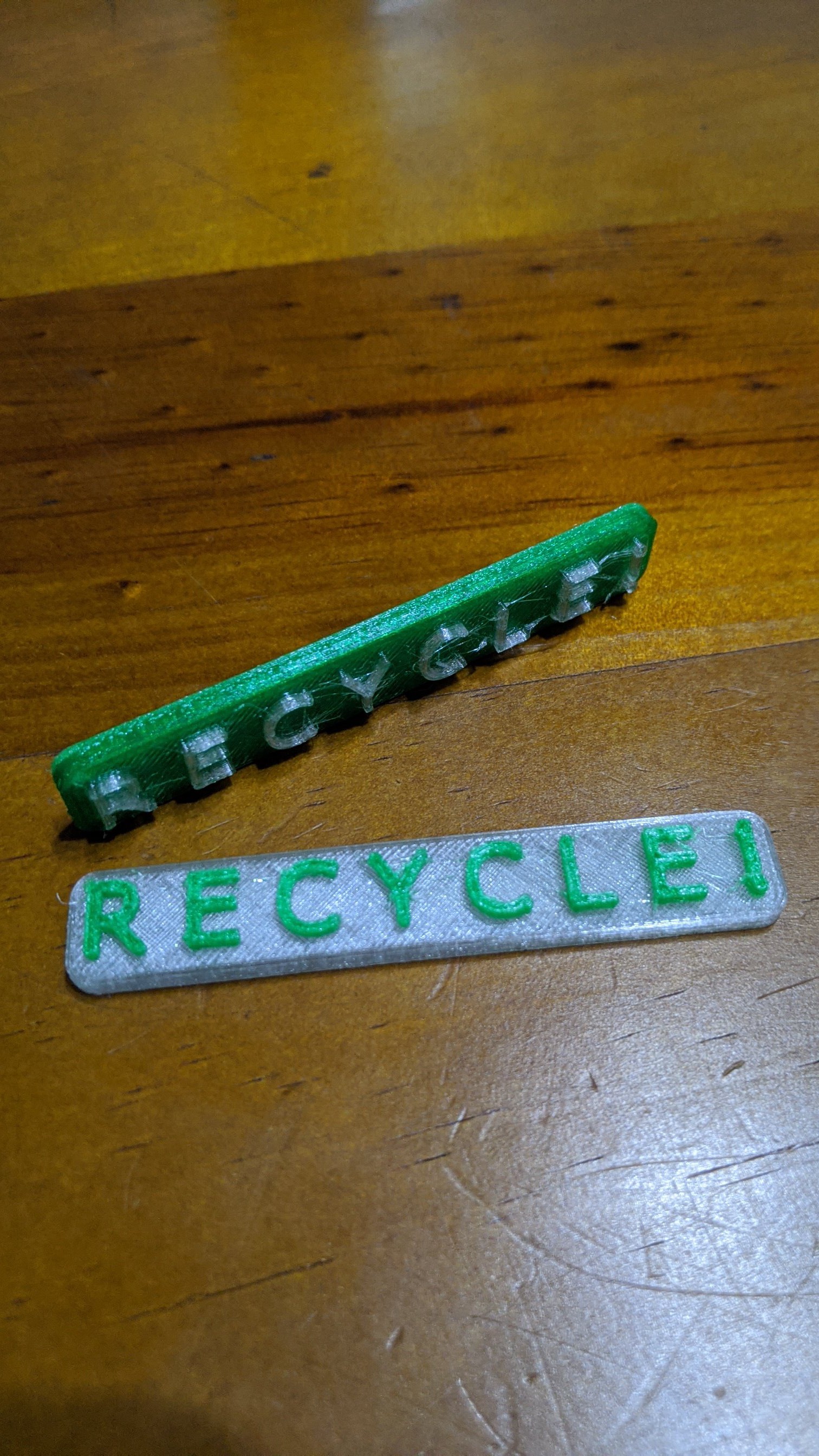
[Figure 9: Filament signs]
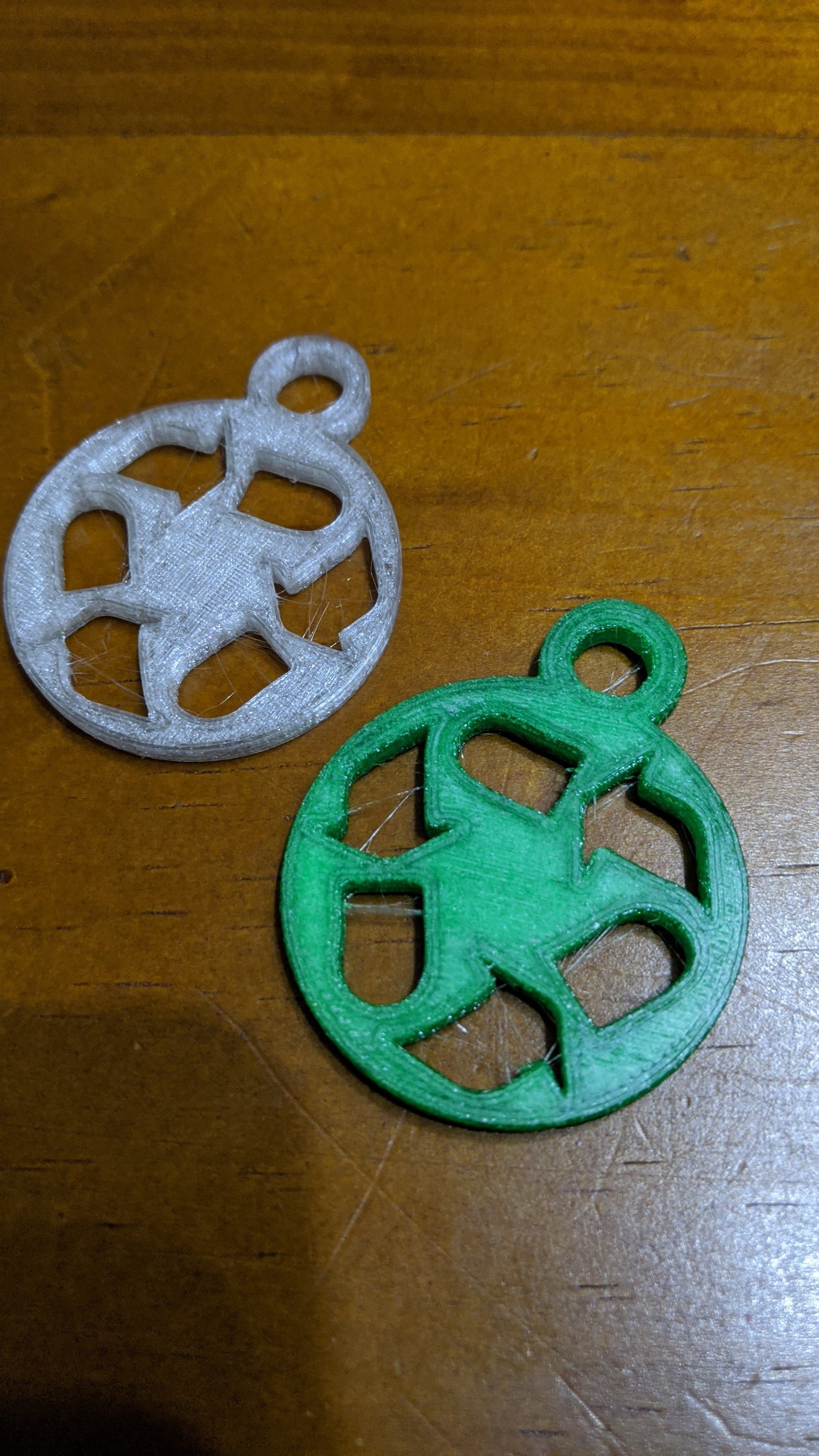
[Figure 10: Filament keychains]
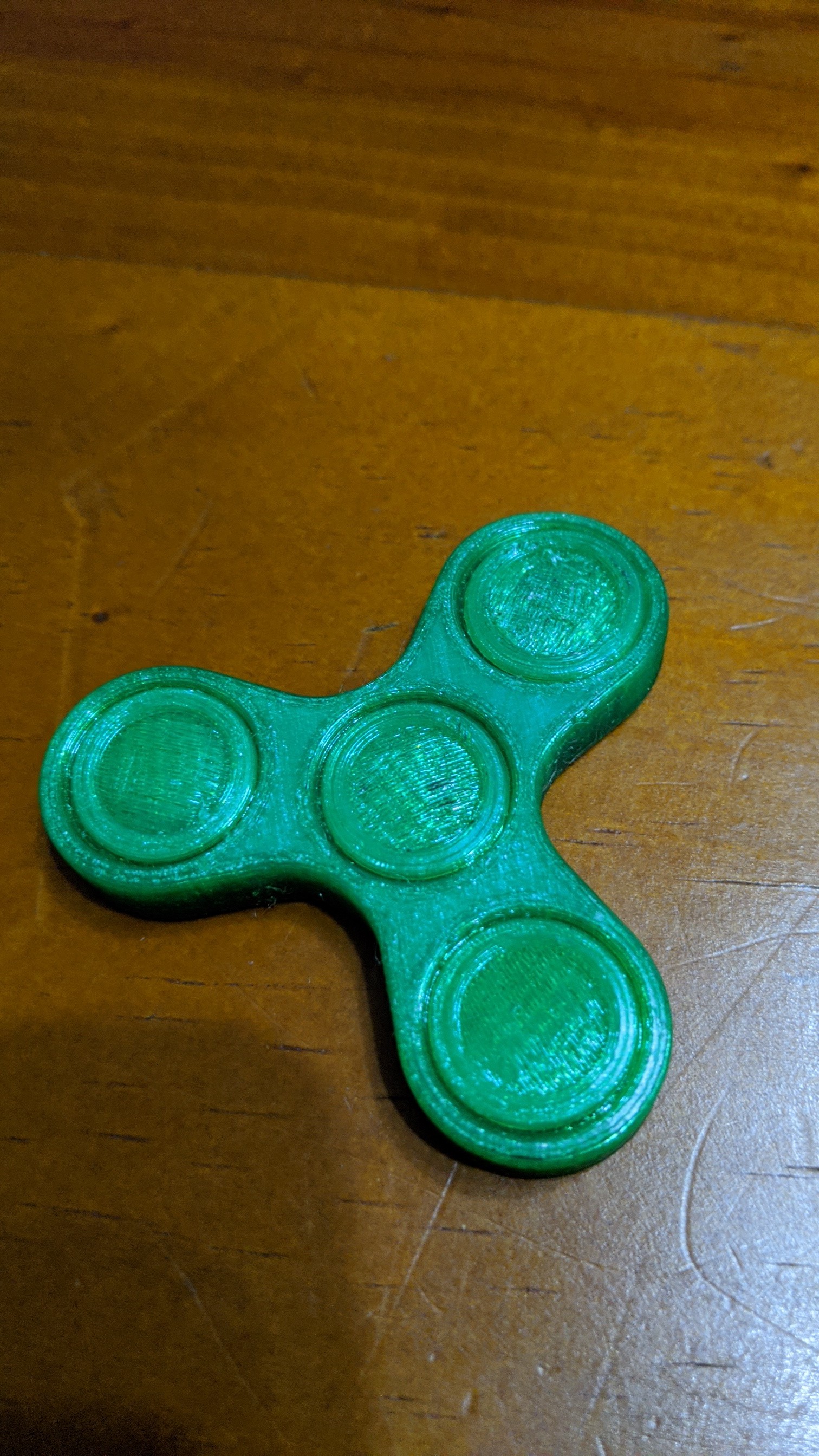
[Figure 11: Working filament fidget spinner]
Schematics and Input/Output Requirements
Below is the main wiring diagram for the Polyformer.
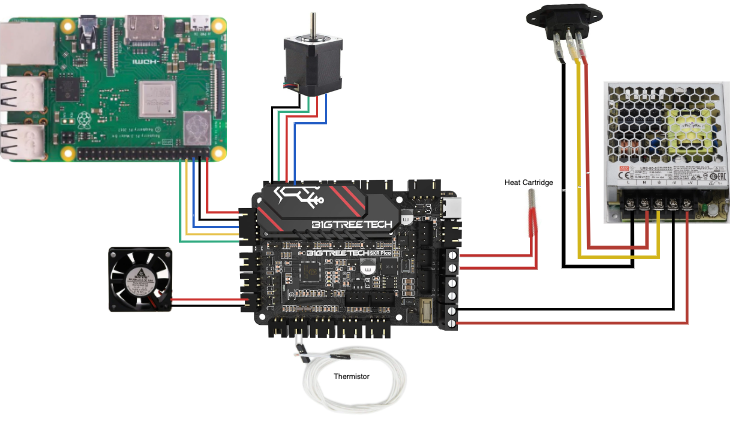
[Figure 12: Wiring Diagram for Polyformer]
Support
This project was supported by the Future Skills Center program (FSC).
 Swaleh Owais
Swaleh Owais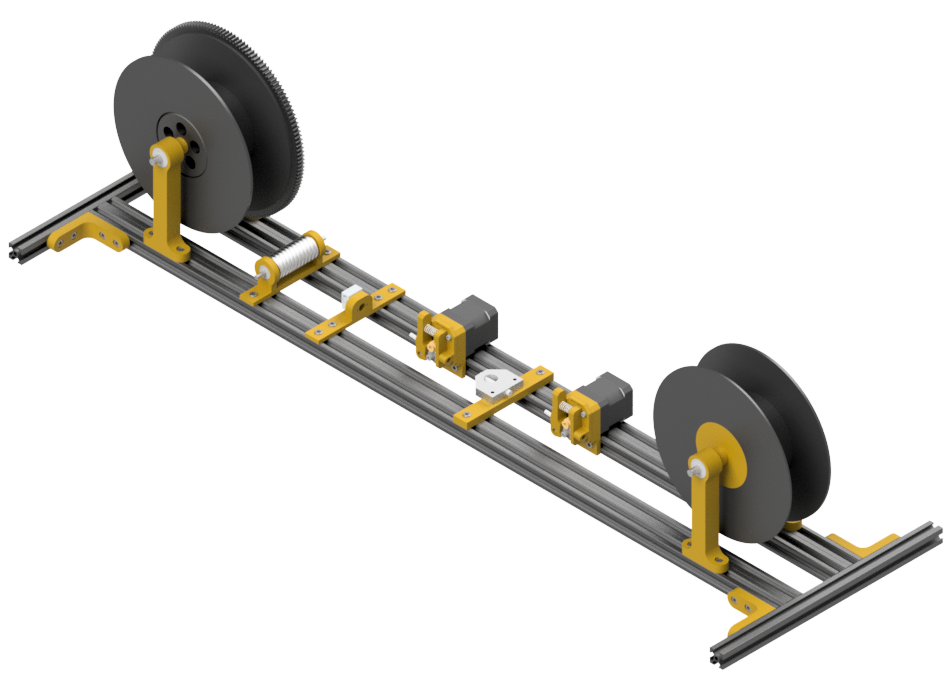 [Figure 7: Filament Joiner Mechanism]
[Figure 7: Filament Joiner Mechanism]